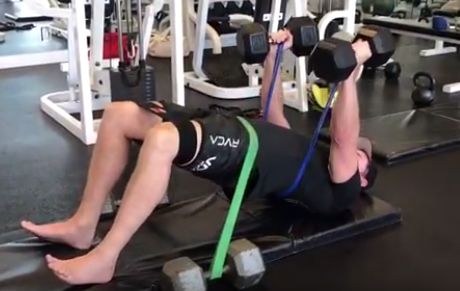 The pull-up is the king of upper body exercises. It builds strength and muscle in your forearms, biceps, lats, and upper back better than any other upper body strength exercise you’ll find. But many people don’t get it right. Like any potentially effective exercise there are ways to screw it up. Elbow, shoulder, and neck problems can creep up on you.
The pull-up is the king of upper body exercises. It builds strength and muscle in your forearms, biceps, lats, and upper back better than any other upper body strength exercise you’ll find. But many people don’t get it right. Like any potentially effective exercise there are ways to screw it up. Elbow, shoulder, and neck problems can creep up on you.
That’s why I’m here to ensure that you get it right. Here are the three essential elements to get the most out of the exercise.
1. The Hang: Start from a full hang position. That’s easy enough, right? But this is often the place where people immediately put their shoulders in a high risk position. When you’re in the full hang it’s important to keep distance between the top of your shoulders and your ears. It’s common to see a guy’s head get buried between his shoulders like a turtle going back into its shell. As my friend Pavel Tsatsouline likes to say, “Think of your shoulders as poison to your ears.” Keep your shoulder blades somewhat down when you’re in the full hang.
Now, I want to be clear here since the “keep your shoulder blades down” tip has gotten a lot of criticism. There should be some shoulder elevation in the full hang – that’s natural and healthy. What I’m advising against is a full hang where your shoulders go all the way up to your ears since that’s not a healthy position to constantly pull from. There’s a happy medium between keeping your shoulder blades all the way down and tight (a position I don’t recommend) and letting your shoulders relax and shrug up to your ears (another position I don’t recommend). Find an intermediate spot that feels right to you in the full hang.
2. The Pull: As you pull your body up, focus on pulling your elbows down and in to activate your lats. This simple trick will strengthen and grow your lats much faster. Pull until the elbow joints can no longer flex. Lower under control but keep your shoulders away from your ears in the hang.
3. Hand Position and Rotation: Like most body weight exercises, I favor a very high frequency of training for the pull-up to build the muscles fast. The upper back muscles are difficult to overtrain, and that’s one of the reasons why the guys who do pull-ups all the time have the best upper backs. However, elbow problems are common in lifters who start doing them every day. The problem is with their hand position on a fixed bar. As you pull and lower your body the wrist joints want to naturally rotate to take stress off the elbows. When you’re gripping a fixed bar, they can’t.
The chin-up (a pull-up with the palms facing you) is typically the worst culprit since there’s excess strain on the elbows right from the start. If you’re someone who suffers from elbow pain with the pull-up or chin-up, the solution is simple: do them from rings, TRX straps, or anything that allows your hands to rotate. If rings aren’t an option, focus on pull-ups with a neutral (hammer grip) hand position since it’s the least stressful to the elbows.
To embark on a high frequency pull-up plan, do them five days per week on a 3 on/1 off and 2 on/1 off schedule. So if you start on Monday you’ll take Thursday and Sunday off each week. If you can do 5-10 continuous pull-ups perform 20 reps in each workout. If you can do 10-15, perform 30 reps in each workout. It doesn’t matter how many sets it takes to achieve those reps, just get them done.
Stay Focused,
CW

